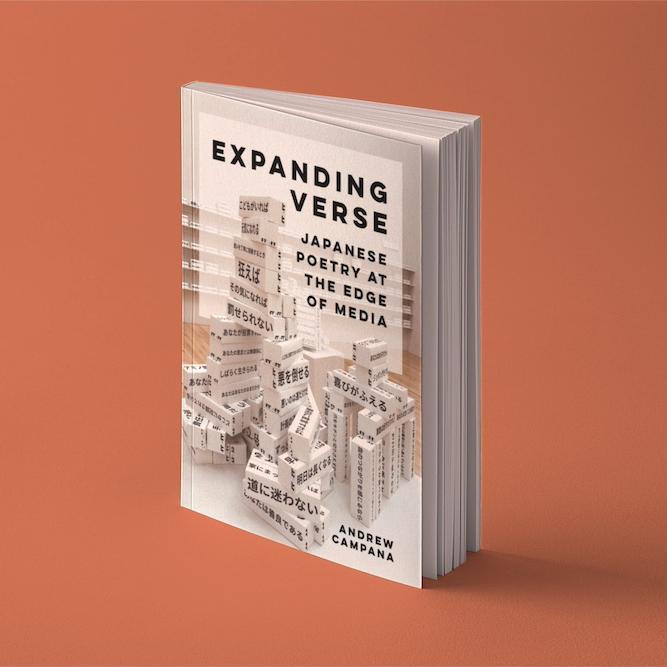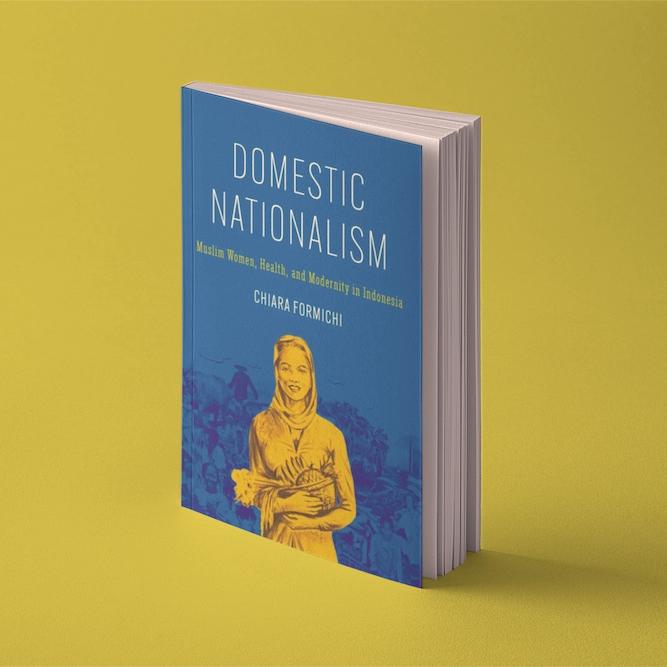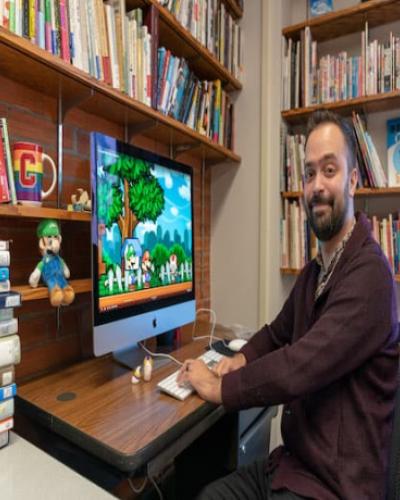Poets and artists of all kinds have challenged the status quo throughout history, even as the technology they used to create their work came with certain assumptions about how it should be used. During the last century, moments of media transition took place with increasing frequency—for instance the transition of silent films to talkies, or the rise of the internet. Those moments are pivotal, says Andrew P. Campana, Cornell Presidential Postdoctoral Fellow.
“At every moment of transition, I’m interested in seeing how different kinds of media practitioners—especially poets, video game creators, and artists—use their work to grapple with the new media landscape,” he says. “They don’t just accept it as is. They actively play around with it and try to carve out new spaces for different kinds of people.”
As part of the inaugural group of Cornell Presidential Postdoctoral Fellows, Campana came to Cornell in the summer of 2018 to work with Brett M. de Bary, Asian Studies. Campana studies modern and contemporary Japanese literature and media, with an emphasis on poetry, digital media, and disability. He is working on his first book, Expanding Verse, which will build upon his dissertation research on Japanese poetry across media.
The Rise of the Cinepoem
“I’m looking at how poets not only use or talk about technologies at moments of media transition, but also how they use their poetry to rethink what these technologies can be,” says Campana. For example in the 1920s and 1930s, cinema was shifting from silent movies to sound films. Where silent movies had the flexibility of live music accompaniment or live narration, sound films would now be tied to the prerecorded sound track. “This worried a lot of people,” Campana says. “They thought cinema would become less interesting, with less experimentation, because film would be tied to a certain type of realism connected to the recording of people’s voices.”
As an expression of this concern, a new type of poetry gained popularity in Japan—the cinepoem. Cinepoems took the form of film scripts for movies that could never be filmed, given the limitations of film technology at the time. For instance, a poem might begin by specifying that the first shot should be of a factory, the next shot of a woman running down a street, and the third shot of the inside of her body. Explains Campana: “They were saying, ‘Not only do we reject what sound film is doing to film, but we even reject the idea that film needs a camera. We’re going to make a new kind of film using our poetry on the page, and it will be more interesting than anything film makers can actually do.’”
“They were saying, ‘Not only do we reject what sound film is doing to film, but we even reject the idea that film needs a camera. We’re going to make a new kind of film using our poetry on the page.’”
Augmented Reality (AR) Poems and Superimposition
These days, people face constant media change as technology keeps evolving, and Campana has turned his attention to the ways in which contemporary poets handle the transition. One of the most cutting edge technologies is augmented reality (AR), the superimposing of a computer-generated image over the real world so that the user has a composite view.
The Japanese poet ni_ka first used augmented reality to create AR poems a few years ago, and other poets followed her lead. AR poems require audience members to download an app on their smart phones and go to a specified location. When they turn on the app and look through their phones’ cameras, they see the poem floating in the air, superimposed over the cityscape.
“There’s this idea that the internet is universal, that no matter where you are, you’re connected to the same thing,” says Campana. “I find it interesting that these AR poems are tied to a specific place. You have to go to that place and use certain technology to have the experience. I think this is a reaction against the commercialization of AR. It’s already being used for marketing purposes by corporations. The poets are saying, ‘We’re going to use this technology to make a genuine artistic experience that will make you rethink not only how you use technology but how you think about this particular place.’”
Video Games and Disability
Campana has plans for a second research project, as well, focused on video games and disability. He will explore the development in Japan of video/audio games for blind players. These rare audio games tell a different story about the development of video games.
“We might think that video games developed in a line from early two-dimensional games to virtual reality,” he says. “But if you focus on communities like blind players, you can tell another story. You realize the terminology, video games, is a biased title. Maybe not all video games need the video. Maybe there can be video games that are sound alone. That makes us rethink what digital technologies can do. It’s not always about vision, and in fact, that might exclude some people.”
Humanities, Computation, and Rethinking Literature
As a multimedia poet himself, as well as a computer coder, Campana understands the issues the poets, game developers, and other artists he studies are grappling with and what they are trying to accomplish. At the Massachusetts Institute for Technology, he was part of the Trope Tank, a hands-on lab dedicated to thinking about humanities and computation in relation to each other. He spent a lot of time finding examples of digital or electronic literature from around the world. Some older works were remade by his colleagues into something that would be accessible to a modern web browser.
“That’s an example of a project that’s tech heavy and also deeply humanistic,” Campana says. “One thing I hope to do with my own work is not just write about these alternative platforms used to create and share poetry, but get my hands dirty and create different platforms myself in collaboration with artists, programmers, and media makers."
Campana is excited to work with de Bary, who has inspired him for years. “She had a huge role in remaking Japanese literary and cultural studies into something vibrant and different than it used to be,” he says. “I’ve taken from her work this idea that literature is not closed off from the world. It’s not about individuals in towers writing things and sending them out. It always emerges from communities. And it’s not something that’s only on the page, but it’s open to other media, like film or video art. I’ve learned so much from her already, and I look forward to working with her to rethink what literature means in the twenty-first century and what it might become going forward.”





